You’ve been posting a lot on social media, but somehow, you’ve got little engagement and reach to show for your effort.
You may have more than a thousand followers, and in your unbiased opinion, your posts are engaging enough. They may even be packed with utility.
But for some mysterious reason, they’re not translating to sales, signups, or revenue.
If you can relate to most of the above, it’s time to start thinking hard about who your target audience is.
Sounds tricky, I know. With over 5 billion social media users worldwide, finding your target audience is like trying to find a black cat in a coal cellar.
So, how do you find your target audience on social media? This guide tells all.
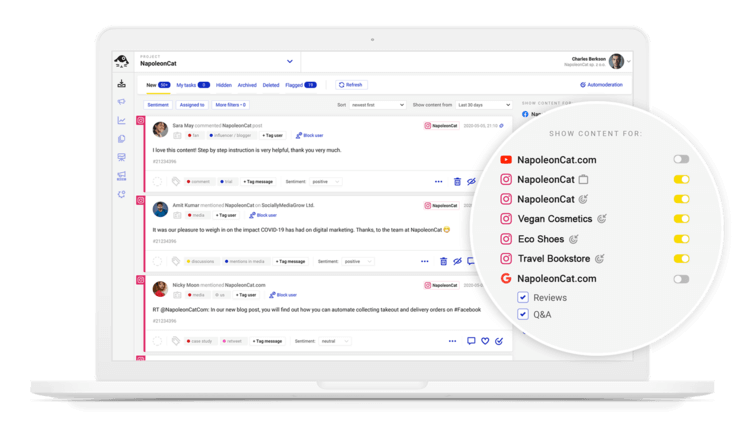
Simplify Social Media
Management with One Tool
- Manage & reply to comments and DMs in one place.
- Monitor ad comments from multiple accounts.
- Automate answers to repetitive questions.
- Schedule posts to multiple accounts, on desktop.
- Analyze performance and monitor hashtags.
- Keep track of your competition.
- Create or schedule in-depth reports in seconds.
What is a target audience?
A target audience is a specific group of people brands aim to reach with their marketing messages and campaigns.
In other words, your target audience is the people who are most likely to buy your products and services.
But before you get to the buying part, you must try to identify, define, and understand your target audience. Understand their needs and preferences. Know what keeps them up at night, which places they like to hang out, and so on.
Only then can you design a social media marketing strategy that helps you craft social media posts that resonate with them and make them buy what you’re offering.
Different audience segments
To identify or narrow down your target audience, you must use specific criteria or segments, which include the following:
Demographics
Demographics are the basic categories that separate your target audience from others. I call them “basic” because if you were tasked with identifying your audience in a big crowd, using these categories would usually be the quickest way to find them.
These categories include:
- Age
- Gender
- Income Level
- Education
- Marital Status
- Etc.
Defining your target audience by demographics also provides a good headstart for narrowing down your target audience later.
For example, if you sell baby products, you’d primarily target parents or expecting parents between the ages of 25 and 40. These parents are typically females with a middle to high income who are probably married.
As you can see, segmenting your audience by demographics gives you the headstart you need before narrowing down your target audience.
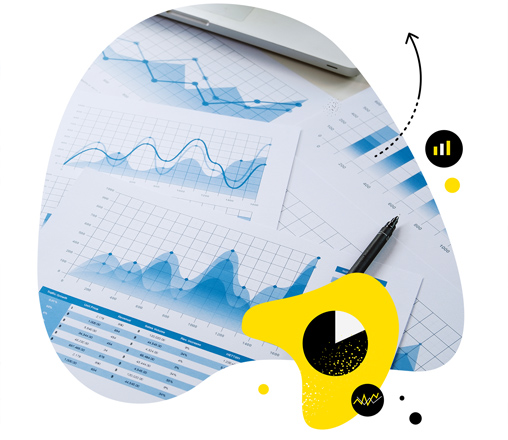
Find your target audience on social media
Get in-depth social media analytics for your own accounts and for your competitors, too! Compare accounts side by side and quickly generate or schedule reports – with an all-in-one social media tool.
Psychographics
Psychographics are the psychological characteristics that influence your target audience’s buying behavior.
These characteristics include:
- Values
- Interests
- Beliefs
- Lifestyles
- Attitudes
If demographics answer the question of “who” your target audience is, psychographics answer the question of “why” they buy. These attributes dig deeper into what motivates them, keeps them up at night, or makes them get up in the morning.
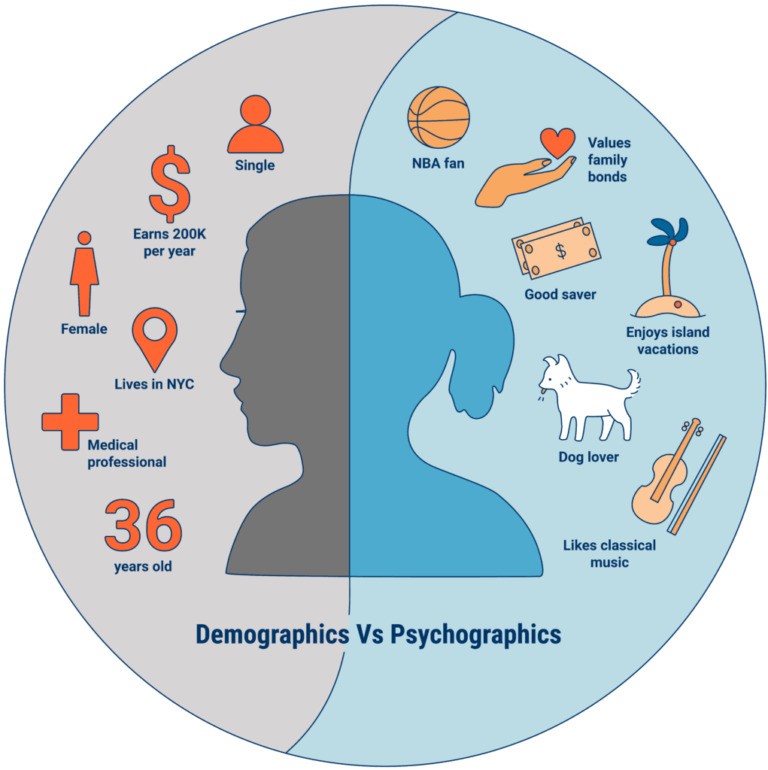
By segmenting your target audience via psychographics, you gain deeper insights into what drives their buying behavior. If you aim to win your audience’s loyalty (as you should), using these deep insights is your best bet. After all, there’s no better way to win their lifelong loyalty than to tap into their “roots.”
Subculture

We all define ourselves by our interests, attitudes, and beliefs and, in turn, by the groups that share them.
When you identify as a Swiftie, a skateboarder, or a member of any other distinctive group, you’re essentially acknowledging your belonging to a subculture.
Members of a subculture are often formed around music genres, fashion styles, hobbies, and social movements. And the way communities work, it’s no surprise they usually have shared values, passions, and lifestyles (to a degree, at least).
By identifying the subcultures your target audience belongs to, you can tailor or refine your messaging to tap into their shared values and, by extension, their preferences and needs.
For example, if you’re a brand targeting skateboarding enthusiasts, it makes sense to adopt a brand personality that exudes the rebellious, free-spirited values of the skateboarding subculture.
Subcultural marketing can increase brand loyalty and community engagement by showing that the brand understands and respects the unique aspects of the subculture.
Needs and pain points
You need to define your target audience’s specific problems or needs. After all, these are the things you want your brand, products, and services to address.
How you design your marketing message and products will be based on these pain points.
These pain points can be categorized into:
- Frustrations
- Inconveniences
- Obstacles
- Inconsistencies
- Dissatisfactions
It’s important to distinguish these categories. Even when targeting specific needs and pain points, their nature takes different shapes in the buying journey.
Why you should know your target audience
Knowing your target audience on social media helps you focus your social media marketing efforts in a way that has the most impact on your engagement and bottom line.
It’s a bit unintuitive, doesn’t it? If the goal is to grow your audience and sell more, why focus on a small section of your potential audience?
The bigger your audience, the more you can maximize your ROI, right? Not necessarily.
If you want to leverage your audience in a way that translates to conversions, you must take the time to understand them. How else can you tailor your marketing efforts to meet their needs and preferences?
However, it’s not as simple as it sounds. Because knowing your target audience underpins a rather unintuitive principle: to grow your audience, you need to narrow your focus.
Why? Because when you try to please everyone, you end up pleasing no one.
As the cliché goes, nobody can please everyone.
Besides, once you find your “people” and create messages and products that speak to their needs and solve their problems, they end up telling other people. And if you’ve been around social media long enough, you’ll know that people there like to share content that excites or speaks to them.
To quote Seth Godin:
“Two things happen when you delight your minimum viable audience. [First], you discover it’s a lot larger group than you expected. [And second], they tell others.”
How to find your target audience on social media
The idea of finding your target audience on social media can feel intimidating. But you’ll find it a lot easier if you implement the following steps:
1. Start with what you know
What you know about your target audience now may not be 100% complete, refined, or accurate yet, but it gives you a starting point.
If you already have a customer base, use them as a reference point. To get a more complete picture of who they are, ask the following questions:
- What age range do they fall into?
- Which gender or genders do they belong to?
- What is their occupation?
- What’s their income level?
- Where do they like to hang out?
- Etc.
Write your answers down and break your information down into two categories: qualitative (e.g., interests, hobbies, values, etc.) and quantitative data (e.g., demographic data such as age, gender, location; engagement metrics like likes, shares, comments).
You get a more holistic picture of your target audience that way.
And remember to write the answers down — they will come in handy in the next section.
2. Create a buyer persona
A buyer persona is a fictional representation of your ideal customer based on market research and actual data about your existing customers.
Here’s a great example of a buyer persona:
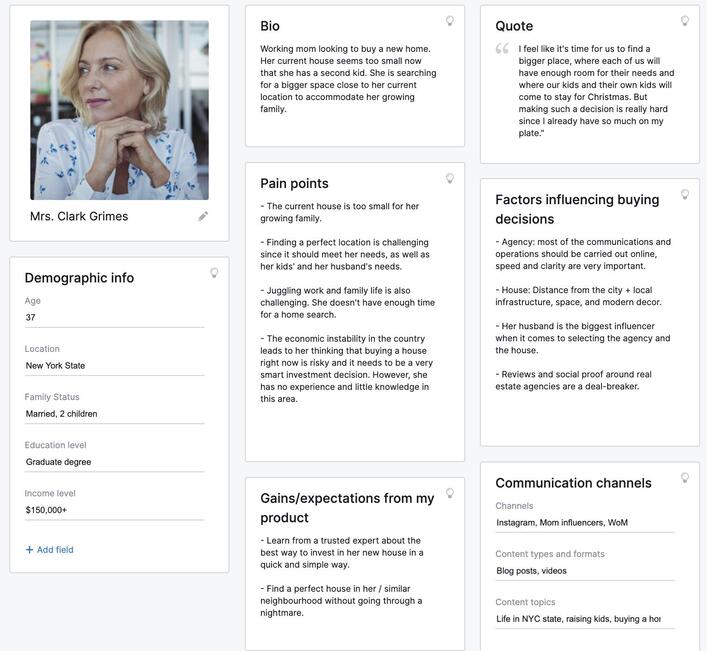
What’s the point of a buyer persona? If you imagine your target audience as a living, breathing person — one with real dreams, likes, pet peeves, and struggles, you’re more likely to care.
And if you care enough, you’re more likely to craft marketing messages packed with empathy and utility.
Take Arby’s as an example. Why does this tweet sound like it’s talking directly to me? I’m beginning to suspect I AM their buyer persona (I don’t mind).

Since you don’t have enough customer data (yet), you can settle for a rough buyer persona. Treat your buyer persona as a living document that you can continually refine and update as you learn more about your target audience.
3. Send surveys
Surveys remain the go-to if you want to fill up your customer data sheets in the most efficient way.
They’re not only inexpensive, but they also help you gather direct insights from your prospects and customers.
Ask the right questions, and you’ll be amazed at the range and depth of insights you can gather from your respondents, as long as they’re game and willing.
When creating questions for your survey, make sure they cover the following types of customer data:
- Background: Ask questions to gather demographic data, such as age, income level, gender, etc.)
- Challenges: Ask questions about the specific problems they’re trying to solve, the frustrations they encounter, their objections, and any obstacles that prevent them from achieving their objectives.
- Goals: Ask them about their short-term and long-term goals, their definition of success, what they want to do next, etc.
Asking 8-10 questions would be enough. Too little and you won’t have enough customer data to inform your persona or ideal customer profile. Too many and they might refuse to proceed with or finish the survey.
Make room for open-ended questions to gather rich, in-depth, and sometimes out-of-left-field yet valuable insights from your respondents.
To create surveys, you can use tools like SurveyMonkey, Google Forms, or Typeform.
4. Conduct interviews
While surveys give you a wide range of customer data to paint a picture of your target audience, conducting interviews enables you to dig even deeper into their pain points, motivations, and objections.
Remember, your best customers are the ones who have more profound reasons for buying your products. They don’t buy your productivity app just so they can quickly finish their jobs; they buy it to create a better life for themselves and their families.
Interviews provide opportunities to ask follow-up and probing questions, allowing you to uncover their deeper motivations and insights. These questions include:
- What do you mean?
- Why do you say that?
- Is there anything else you want to add?
- Can you give me an example?
If you need guidance on what questions to ask your customers during interviews, look at MailChimp’s recommended customer interview questions.
5. Use social media analytics
Social media data can paint a clear picture of your target audience, especially if you take the time to learn how to use social media analytics tools.
These tools not only help you measure your content performance, but also help you better understand your audience’s behavior.
All social media platforms offer built-in analytics. They’re free and come with basic features for tracking performance. If you can interpret the data, you can spot patterns and trends that can uncover insights that inform your social media marketing strategy.
Some questions you can ask yourself while using social media analytics include:
- Do you see any changes in engagement rate or growth?
- Do you see common demographic characteristics (age, gender, location) among your most engaged audience segments?
- Do you spot trends or shifts in engagement during specific times of the year?
Keep asking these questions, and you’ll slowly see a clearer picture of your target audience emerge, including their inner motivations, objections, dreams, habits, and more.
However, to arrive at your answers, you may need to export your social media analytics data into spreadsheets for more nuanced analysis.
If you hate spreadsheets as much as I do (it’s one of the many things I don’t excel at — haha, get it?), you can use a dedicated social media analytics tool like NapoleonCat instead.
For one thing, it enables you to track every aspect of your content performance in one place. That means no need to switch from one social platform to another. And no need to get tangled up in spreadsheets and sift through endless lists of line items.
Here are some of the things you can do with NapoleonCat’s social media analytics feature:
- Track key metrics like engagement rates, reach, follower growth, demographics, and more.
- Track key metrics for your social media channels over different time periods (e.g., days, weeks, months, or custom time frames).
- Compare your social media profiles side by side.
- Compare your social media channels against your competitors side by side.
- Track your competitors’ social media activity and see how their target audience (also yours) reacts.
- Create customized, automated reports (including competitive reports, but more on that later) for Facebook and Instagram and schedule them to be sent to your team members, clients, and boss at specific intervals (weekly, monthly, or quarterly).
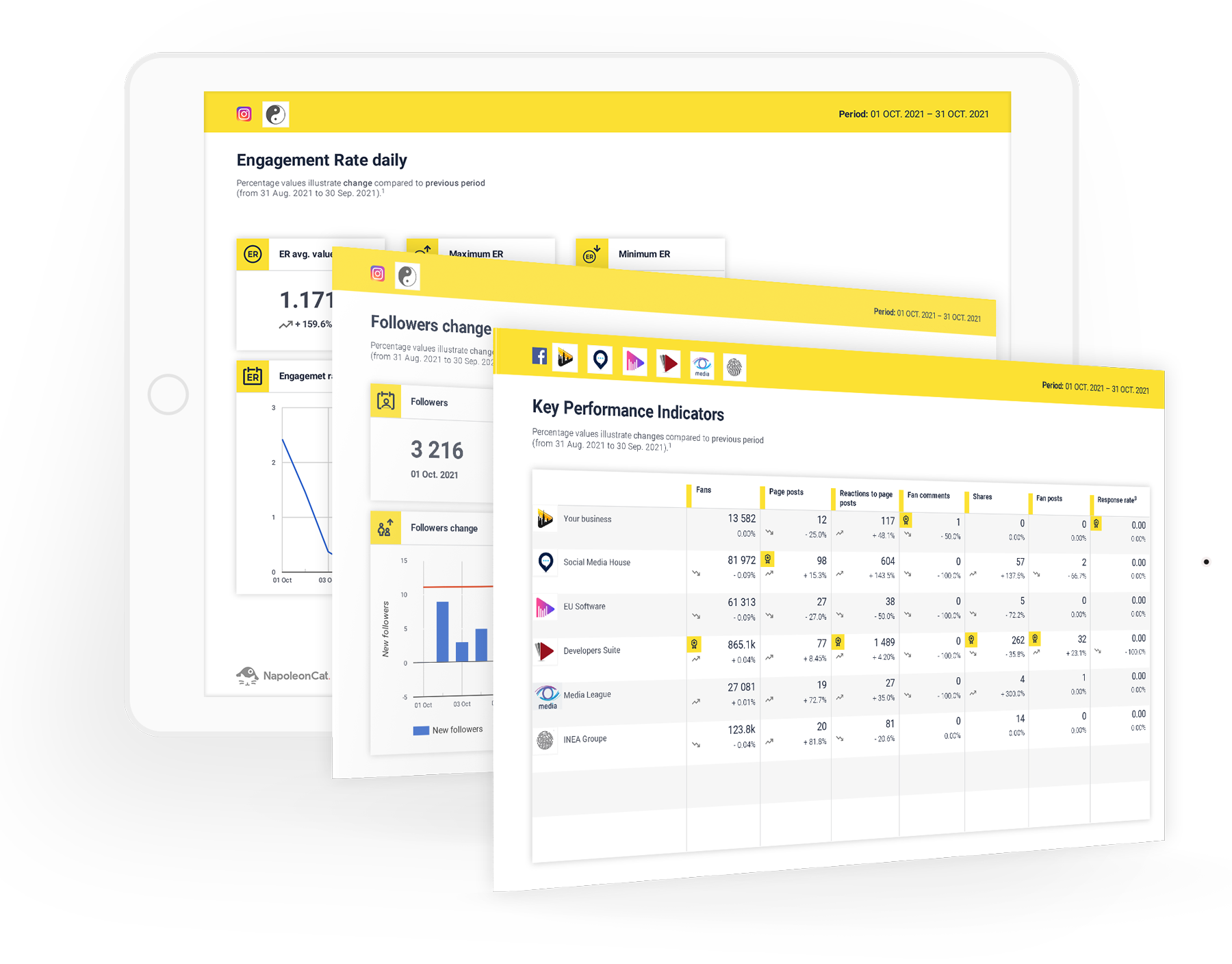
NapoleonCat’s analytics feature offers a user-friendly interface that helps you do all of the above while allowing you to navigate through different data points. As a result, you get access to granular data, which helps you develop more nuanced insights about your target audience.
Let’s say you adopted a more casual tone in your Facebook posts over the last month and want to know how your audience responded. Once your Facebook profile is connected to NapoleonCat, you can track and analyze key metrics such as engagement rates, reach, and follower growth and select the timeframe of that particular period as a custom date range.
If you’re getting more engagement, it’s probably time to drop the formalities and use a more relaxed tone in future Facebook posts.
That’s just one example or use case. You can also check key metrics such as the number of fans you’ve gained during that period, which posts generated the most interactions, which hashtags garnered the highest engagement, and more.
By analyzing how your audience is responding within specific periods, you gain insights into your target audience that you won’t find from native social media analytics tools.
We highly recommend you test NapoleonCat completely for free – no credit card required 😉

Find your target audience on social media
Get in-depth social media analytics for your own accounts and for your competitors, too! Compare accounts side by side and quickly generate or schedule reports – with an all-in-one social media tool.
6. Do a social media competitor analysis
You can learn a ton about your audience by checking out how they engage with your competitors.
By analyzing your competitors on social media, you can identify their hits and misses and then use those insights to design a content strategy that will have an impact on your target audience.
Doing a social media competitor analysis also helps you:
- Position your brand in a way that makes you stand out to your ideal customers.
- Understand industry best practices so you can implement them (or go beyond them to gain an advantage).
- Fulfill your customers’ desires and needs better than the competition.
- Benchmark your social media performance against the competition.
- Gain a more refined understanding of your target audience.
When doing a social media competitor analysis, choose up to three or five competitors to focus on. Go through each brand’s social media networks and document key metrics such as posting frequency, engagement rates, content types, and audience reactions.
Now, compare these metrics to your own performance. Can you identify gaps and opportunities for improvement? Which types of content are people responding to? Gather and incorporate your findings into your buyer persona and social media content strategy.
Again, you don’t need to use spreadsheets to pull this off. With NapoleonCat’s competitor analysis tool, you can see how your performance stacks up against the competition in seconds.
With the competitor analysis feature, you can:
- Monitor and analyze your competitors’ accounts on Facebook, Instagram, and YouTube.
- Compare multiple social media accounts side by side and see which brands are leading in terms of engagement, reach, and follower growth.
- Spot trends and patterns in your competitors’ posting schedules and audience interactions.
For example, here’s a side-by-side comparison of 5 Facebook Pages from five automotive brands. By comparing their data from the previous period, you can spot at a glance how brands are stacking up against each other in terms of engagement rate and number of fans.
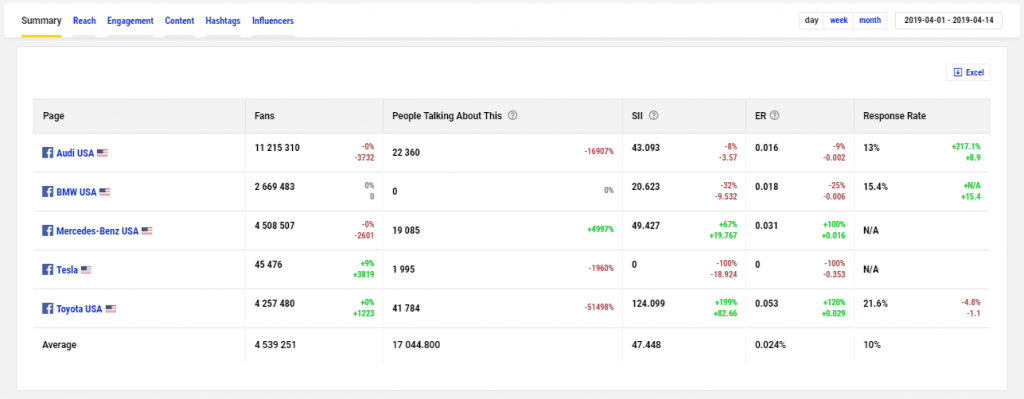
To top it off, you can also generate competitive analytics reports for Facebook and Instagram. You can create one analytics report with up to 8 Facebook Pages, analyzed side by side, allowing you to get an in-depth breakdown of each competitor’s performance.
Generating a report takes only a minute. Even better, you can schedule reports to be sent automatically to clients, bosses, or team members at specific intervals.
How to create content for your target audience on social media
Once you’ve gotten to know your audience better, you can start creating social media content that resonates with them.
Incorporate the data and insights you’ve gathered into your buyer persona and put it in a place where you can easily see it while working. Every time you sit down to craft your posts, do it with their interests in mind.
Besides posting at optimal times on social media, make sure you have a consistent posting schedule.
Granted, trying to keep up with a consistent publishing schedule can be difficult, especially when you’re managing multiple social media accounts. Thankfully, using NapoleonCat’s social media publisher saves you a ton of time.
With our publishing tool, you don’t need to waste time posting separately on each platform. Why bother when you can schedule and add posts to Facebook, Instagram, TikTok, LinkedIn, and Google My Business at the same time, using one convenient dashboard?
This makes maintaining a consistent social media presence more efficient and, well, easier.
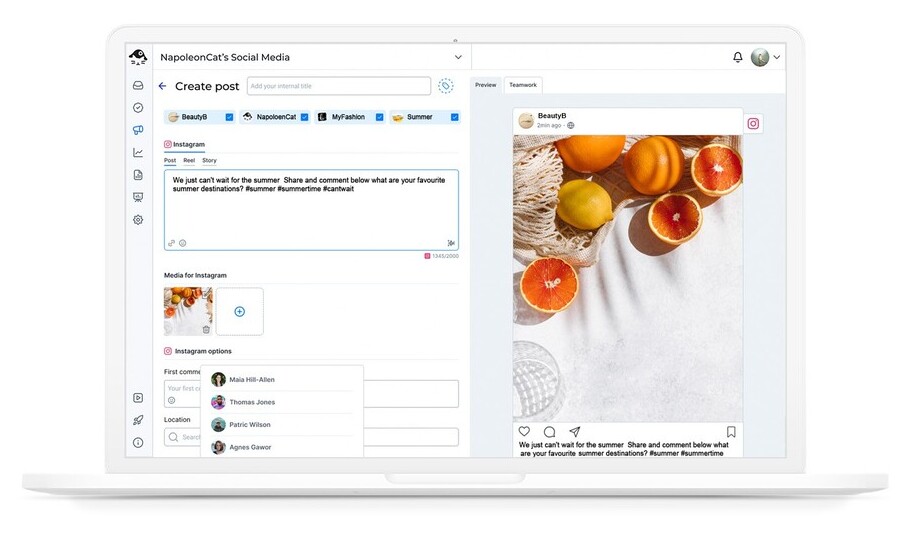
Wrap up
Yes, social media is a crowded place. But your target audience is out there, waiting or looking for something that will make their lives a little better.
You can’t get to that point where you can help them if you’re talking to the wrong crowd. At the risk of sounding like a dollar store Seth Godin, I’ll say this: If you want your target audience to see you, you must first see them.
So, take the time to get to know your audience and tailor your social media content to meet their needs and preferences. I promise your efforts will pay off in the long run.

Simplify Social Media
Management with One Tool
- Manage & reply to comments and DMs in one place.
- Monitor ad comments from multiple accounts.
- Automate answers to repetitive questions.
- Schedule posts to multiple accounts, on desktop.
- Analyze performance and monitor hashtags.
- Keep track of your competition.
- Create or schedule in-depth reports in seconds.
You may also like:
- How to Measure Brand Awareness on Social Media
- Meet The Best Social Media Benchmarking Tool
- Competitor Mapping: Why And How To Do It
- Social Media Competitor Analysis – Complete Guide
- How to Track Competitors on Facebook
- How to Analyze Competitors on Instagram
- Top 10 Competitive Intelligence Tools
- Creating Facebook and Instagram Analytics Reports: A Guide
- How to Track Instagram Follower Count Over Time


